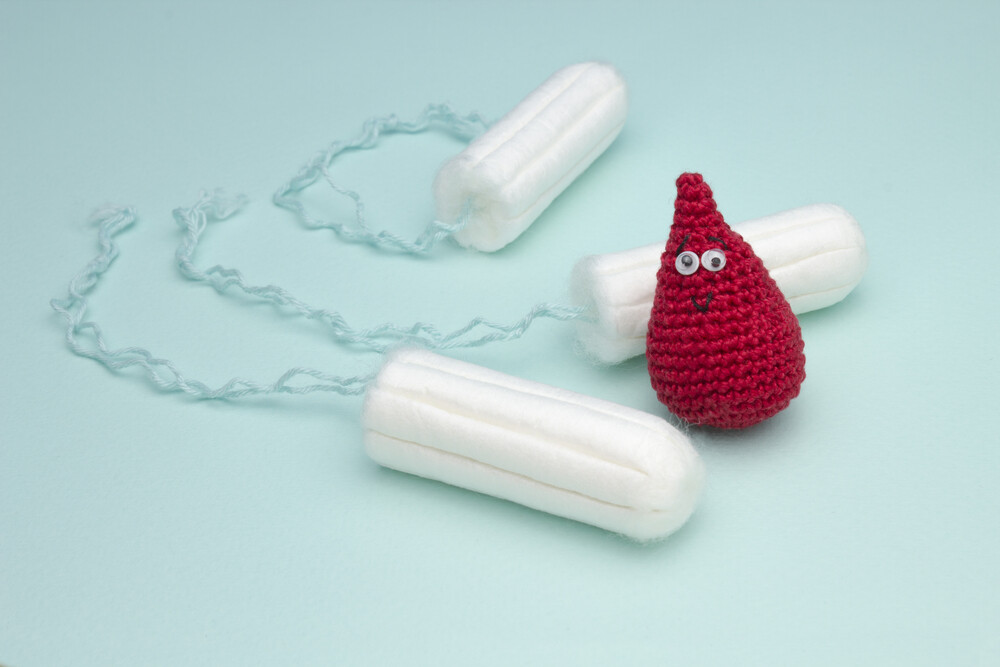About 400 times in life we get our period. That is at least 400 days when we feel bad. Lousy record! Not with us!
1. Drinking tea
A tea made from lady’s mantle, chamomile and goosefoot helps to ease the cramps. Scald a tablespoon of the mixture (one third of each herb) with a cup of hot water and let it steep for 15 minutes. Very effective ready-mixes are available in pharmacies.
2. Eating chocolate!
It’s official: chocolate helps. Blood loss means magnesium loss. And that can be easily compensated for with high-proof chocolate. The darker the chocolate, the more of the valuable mineral it contains.
3. Drinking plenty of water
In order to prevent oestrogen-related water retention, you should drink plenty of water as a rule. Studies have also shown that water can basically help against pain.
4. Massage
Gently massage the lower abdomen with essential oils (such as chamomile, fennel, marjoram). If you do not like the smell, you can also use lavender oil.
5. Hot water bottle
Granny’s classic still works wonders. Warmth relaxes in case of cramping pain – and can be combined wonderfully with sofa and TV! A cherry pit cushion is of course also possible.
6. Bathing
A relaxing bath can also alleviate the pain and help you switch off. If you like to mix it yourself, buy the aromatic oils Ylang-Ylang (five drops) and Neroli (two drops). Pour this mixture into the incoming bath water.
7. Homeopathic drops
Homoeopathy recommends magnesium phosphoricum in potency D 6 for cramp pain, of which seven to ten tablets should be dissolved in a glass of water. For colicky pain, Cuprum metallicum in potency D 12 should be taken. Dissolve five globules in a glass of water.
8. Mix of rest and activity
Stress can intensify menstrual problems – so you should get plenty of rest and make sure you get fresh air, enough sleep and healthy food. Regular and moderate exercise can also prevent menstrual pain: the pelvis is better supplied with blood and cramps are relieved.
9. Plant power
Some women swear by antispasmodic natural remedies such as monk’s pepper or St. John’s wort (over the counter at the pharmacy). Monk’s Pepper is said to regulate the hormonal balance and stimulate the production of female hormones. Does not work for everyone, but it is worth a try.
10. Taking vitamin B6
The special vitamin B6 can help with menstrual pain because it stabilizes the nervous system. It is found, for example, in mackerel, salmon, bananas and wholemeal bread.
11. Plenty of vitamin E
The daily dose of vitamin E can help reduce menstrual pain and decrease blood loss. Of course, we also think it is great that it protects the body’s cells and makes for beautiful skin. These foods are particularly rich in vitamin E: hazelnuts, blackcurrants, sunflower oil, sweet potatoes, mango and salmon.
12. Carbohydrates yes, fat no
Studies have shown that women who have lost about 15 % fat and who have also eaten a carbohydrate-rich diet have significantly fewer complaints (fewer breast tenderness, migraines and water retention).
13. The pill
Gynaecologists often prescribe the pill for severe menstrual pain. The artificial hormones balance the hormone balance. This results in less pain and weaker bleeding. Consult your gynaecologist in detail!
14. No smoking!
Smoking reduces the blood circulation in the tissues even further and thus increases the cramps. Smokers therefore suffer more often from severe menstrual pain than non-smokers.
15. The classic: The tablet
Nothing works anymore? Neither relaxation nor exercise bring the saving relief? For this hardship, there are special pain relievers from the pharmacy (for example dolormin for women). The active ingredient ibuprofen, which is often contained in the medication, inhibits the pain messengers and provides improvement. But be careful: if you are taking it for a long time, you should ask your doctor beforehand, because some medications can strain your stomach in the long run or have other side effects.

